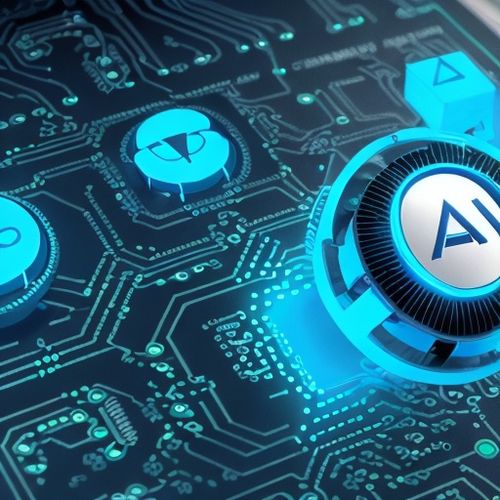The tech world is abuzz with the news that creating advanced AI models may no longer require the vast resources and cutting-edge technology once believed to be essential. This revelation comes courtesy of DeepSeek, a Chinese startup that has developed an open-source AI model, R1, which matches the capabilities of leading American models at a fraction of the cost. This development has shattered long-held assumptions in the US tech industry and forced Silicon Valley to reevaluate its approach to AI development.
The Rise of DeepSeek R1
DeepSeek’s R1 model is a game-changer. Developed in just a year, this free, open-source AI model is on par with advanced models from American tech giants like OpenAI and Google. What’s more, it was built for a fraction of the cost, using less advanced chips and requiring far less data center power to run. This achievement challenges the conventional wisdom that American tech giants could maintain their lead by spending billions of dollars, amassing advanced chips, and building massive data centers.
Until now, the belief in the US tech world was that the wealthiest companies could outspend everyone else and come out on top. However, DeepSeek’s success has called this strategy into question, prompting tough questions from Wall Street and forcing tech giants to reconsider their approach.
The Shifting Paradigm
The paradigm of AI development is shifting. Zack Kass, an AI consultant and former OpenAI go-to-market lead, notes that “the paradigm is shifting.” The key to success in AI may no longer be about having the most expensive, powerful models. Instead, companies may now compete on lowering costs, building more helpful applications, and reducing their environmental footprint.
This shift is already prompting responses from American tech leaders. OpenAI CEO Sam Altman called DeepSeek’s R1 model “impressive” and promised to accelerate the release of more powerful models. OpenAI Chief Product Officer Kevin Weil also highlighted the upcoming o3 model, set to launch in the coming weeks, as a “major step up.” This competitive response underscores the global nature of the AI race, which is no longer confined to the US.
The Impact on Big Tech
DeepSeek’s achievements have significant implications for Big Tech. Companies that have invested billions in data centers and advanced chips may now need to scale back their spending plans. Analysts expect these companies to rethink their strategies, focusing on efficiency and cost reduction. Gil Luria, head of technology research at D.A. Davidson, argues that DeepSeek’s success will inspire other frontier model labs to build far more efficient models, driving down costs and making AI more accessible.
However, unwinding spending on data centers could be challenging. Just last week, OpenAI, Oracle, and SoftBank announced a $500 million investment in US AI infrastructure. Microsoft CEO Satya Nadella affirmed his company’s planned $80 billion investment in AI development and infrastructure this year, while Meta CEO Mark Zuckerberg said his company’s AI spending could reach as much as $65 billion this year.
The Future of AI Development
DeepSeek’s rise suggests that the future of AI development may focus more on efficiency and optimization. The industry was already moving towards this direction, but DeepSeek has accelerated the timeline. Companies will need to find ways to add AI capabilities using existing computing power rather than relying on ever-increasing server farms.
This shift could also impact consumer pricing. If tech giants reduce data center costs for training AI models, they may pass these savings on to consumers, making AI tools more widely accessible. However, this could also increase the strain on data centers, as more users take advantage of these tools.
The Role of Open-Source AI
DeepSeek’s success has also highlighted the potential of open-source AI. Proponents argue that making the underlying architecture of AI models publicly available can drive faster innovation and keep the US at the forefront of AI development. Former Google CEO Eric Schmidt, for instance, has called for the development of a vibrant open-source ecosystem to complement the US’s closed models.
Meta, which has been pushing open-source AI with its Llama model, also sees this approach as a way to bring the benefits of AI to everyone faster. This perspective suggests that sharing innovations rather than gatekeeping them could be the key to maintaining US leadership in AI.
Embracing the AI Revolution
DeepSeek’s R1 model represents a significant milestone in the AI revolution. Its success challenges the notion that massive financial investment and advanced technology are the only paths to AI dominance. Instead, it highlights the importance of innovation, efficiency, and collaboration.
As Silicon Valley grapples with this new reality, the focus may shift from outspending competitors to out-innovating them. Tech giants will need to adapt quickly, embracing efficiency and open-source strategies to stay ahead. While this may require short-term rethinking of business models, the long-term benefits could be significant, democratizing AI technology and making it more accessible to all.
In a world where AI has the potential to change everything, DeepSeek’s achievements should be seen as a cause for celebration. They signal that the AI revolution is well underway and that its benefits will be more widely distributed than ever before.
